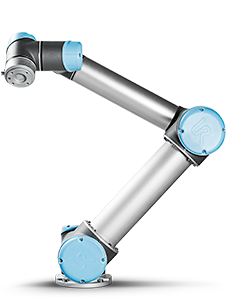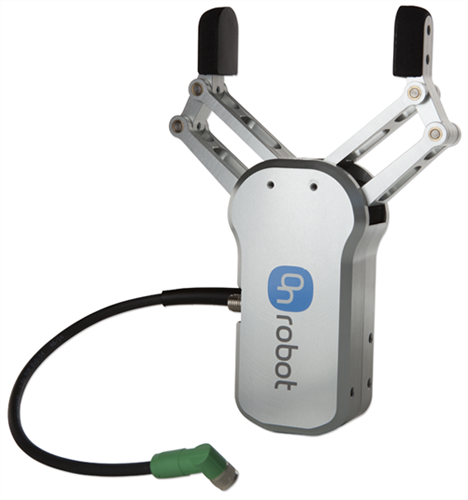When we think of industrial robots, the first image that often comes to mind is large, sometimes scary-looking, machines picking up and welding automobile frames. But with the right attachments, robots can handle smaller, gentler tasks as well. On Robot, for instance, has developed a customizable gripper for collaborative robots gentle enough to safely pick up an egg. Making omelets is not the target application, but handling of finished parts without damaging their surfaces is a valid use.
The first generation of industrial robots handled large manufacturing tasks but posed a problem for humans on the production line. The robots were big, fast, powerful, and dumb. Their strength and speed made it unsafe for humans to be anywhere near them when they were operating. But the newest generation of industrial robots are designed to work safely alongside humans without barriers or distance between them. These collaborative robots, or cobots, are increasingly attractive to small- and medium-sized businesses to serve as working partners for humans on an assembly line.

A collaborative robotic arm is designed to operate safely around its human partners. (Source: Universal Robots)
Cobots move relatively slowly and have sensors to prevent them from striking humans with a damaging blow, but the positional nature of robotic movement still poses challenges when the robot is trying to handle relatively delicate objects. The gripper at the end of a robotic arm must apply enough pressure to reliably hold an object without applying so much pressure that it damages the object. But most robotic control mechanisms simply instruct the robot where and how far to move its appendages. With all the variability in object size and orientation that the robot might encounter, the fixed spacing between gripping “fingers” that such control offers does not reliably equate to a well-defined gripping pressure.
On Robot, however, has recently introduced in the U.S. a gripper attachment for robotic arms produced by Universal Robotics, one of the world’s leading collaborative robot arm manufacturers, that resolves this dilemma. The gripper has sensors that tell it how much force the fingers are applying and allows the user to adjust both the grip’s maximum force (3 to 40 N) and target width (to 110 mm) when closing. Not only does this allow the robot arm to pick up objects up to 3 kg in weight without damaging them, it allows the arm to distinguish objects by their size when it tries to pick them up, so it can sort through a pile of parts to find the right size.

One of the challenges that the company had to overcome was the curved nature of finger movement, general manager of On Robot, Gary Eliasson, told Electronic Products. Fingers, human or robotic, rotate around a pivot point, which means the fingertip moves along an arc. This motion changes the fingertip’s orientation as the fingers close, altering the angle at which the gripping pads would encounter the object. The new gripper, Eliasson said, uses a second actuator to compensate and keep the gripper surfaces parallel throughout the gripper’s range of motion.
Another challenge was the need to provide a secure grip without excessive force, something that the company solved with a special coating. The gripper’s standard tips are covered with a slightly compliant material that has a high friction coefficient. “It’s slightly tacky, actually,” said Eliasson. Customers can customize the gripper with their own fingertip shape and material as well.
This kind of gripper is good for material handling of finished parts, Eliasson pointed out, because it can hold them without causing surface damage. Together with the robot arm, the gripper provides human operators with a second set of hands for handling parts during assembly or when moving them into and out of devices such as lathes. It still cannot do everything that a human can in terms of flexibility, but it can certainly help speed up human productivity. It’s like having an apprentice there to hand up stuff, but an apprentice who never gets tired and never complains.
Advertisement
Learn more about Electronic Products Magazine





